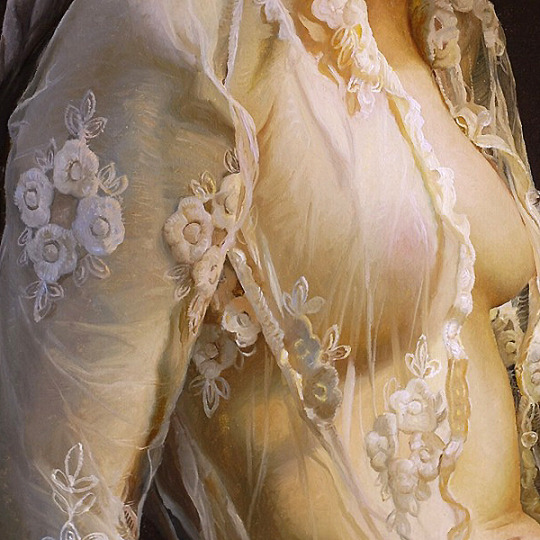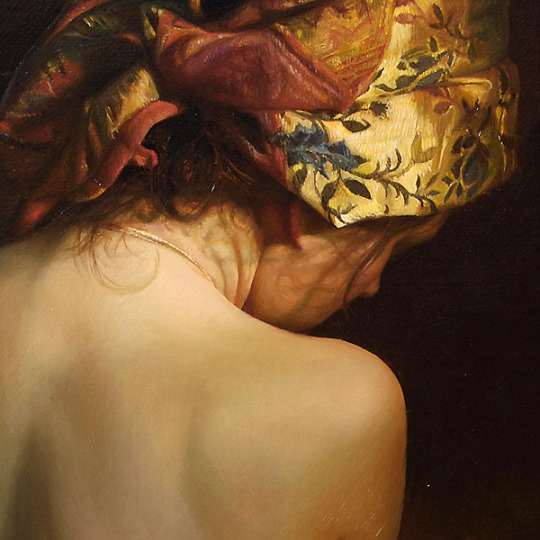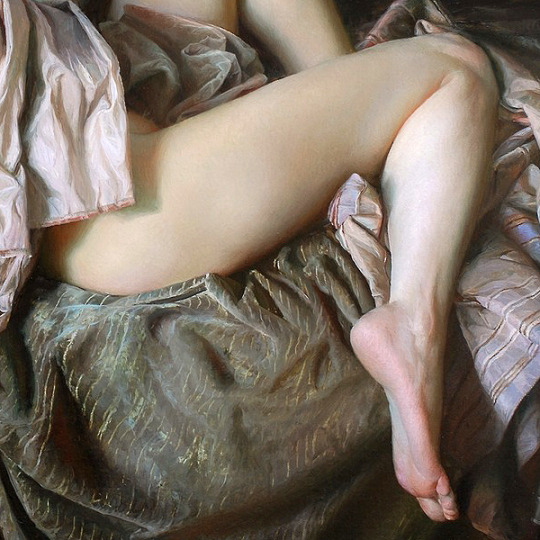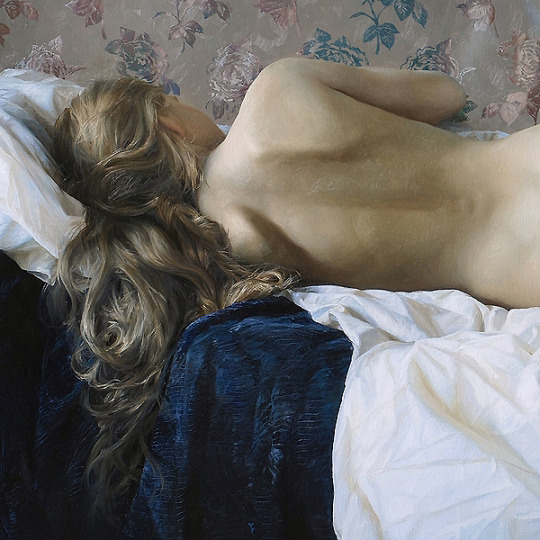Photo

“There my pretty lady is, River-woman’s daughter,
Slender as the willow wand, clearer than the water.”
JRR Tolkien
4K notes
·
View notes
Text
The Four Canonical Painting Modes of the Renaissance
The Renaissance was a time of classical rebirth in many aspects of life, primarily that of art. The abstraction of the religious art of the middle ages began to wane, and instead people took more of an interest in Roman ideals. The paintings and sculptures of the time truly reflect this. While the great men of the Renaissance looked back through history in order to make discoveries for the future, art and science evolved in many ways. New techniques surfaced in painting, many techniques, in fact. However, just four are the most famous. These techniques are named ‘the four canonical painting modes of the Renaissance.’
Sfumato
I have written a post on Sfumato before, and it is quite a popular one of the four modes. To use the words from my post: Sfumato, an Italian word meaning “soft” or “blurred”, is an art technique. This is where the colours and shading are blended gradually from light to dark, without borders or obvious lines. Sfumato was used often for the atmosphere of works and facial rendering. This technique is so well-known due to Leonardo da Vinci (1452-1519) and his master-piece, the Mona Lisa. It is said this technique is has been given the term “Leonardo’s Smoke” as the atmosphere of his paintings are gradual and soft.

Your eye slowly ease over his works, devoid of bright and bold colours demanding your attention. Another example is his Virgin of the Rocks, 1483.

Cangiante
Cangiante, an important aspect to colour theory in the time of the Renaissance. During that time, paints were certainly more hard to come by than they are today. There was a more limited palette, and some of those colours would be difficult to get. The way the paints were laid onto the surface greatly differed from today as well, from the texture, to the vibrancy of the pigments, to the small time it took to dry. The biggest problem these artists faced were shadows. Just mixing colours with black or white, as any artist may well know, does not magically give off realistic or desired results. Instead, the man believed responsible, Giotto (1266-1337), found the solution was to ignore the use of black for shading at all. This would produce some brilliant works of art. Quite the contrast to Sfumato, the idea was for eye-catching colour to be simply everywhere. Examples, taken from this site may rectify any confusion:

Notice how the blue (rather than using black) has replaced the red and yellow as a way of shadowing to the sides?
Another prime example would be Fra Angelico’s work, the Presentation of Jesus at the Temple, 1440-41.

As you can see here, green has become a substitute for the yellow of the robes.
This technique is still commonly seen today. I recommend clicking the previous link to see examples from the movie Monsters Inc.
Chiaroscuro
Now, speaking of shadows, another of the very well-known of these four is Chiaroscuro. It is a combination of Italian, chiaro: “light,” and scuro: “dark.” The aim of Chiaroscuro is mainly to add drama with the contrast of light and dark. Often in scenes using this technique, it will have the subjects in a dark room with only one light source. The lighting tends to fall on the subjects face, highlighting expressions and making them more apparent to the viewer. When thinking of this technique, Caravaggio (1571-1610) most likely comes to mind. He employed Tenebrism in his work, an extreme form of Chiaroscuro.

His work is a prime example of the contrast, especially seen here in Salome with the Head of St. John the Baptist, c. 1609.

As you can see, once again here in Die Festnahme Christi (The Arrest of Christ), c. 1598, it truly does add some added dramatic atmosphere to scenes.
Unione
Unione includes the ideals of the first technique mentioned above, that of Sfumato. A very delicate technique, it’s idea is contouring the lines in a perfect and slight blend. While not as extreme as Sfumato, this technique does not look to give the work a smoky look, but instead allows bold colours and vibrancy in the work. While the two techniques hold the same foundation, Unione aims to bring the words “bold” and “blend” to harmony, directing the eye and be much more obvious without the restricting lines.

Raphael (1483-1520) is the most famous artist to have practiced this technique. As you can see here in his painting, The Madonna of the Pinks, from the early 16th century, the shadows blend with the figures and and no hard outlines remain. Perhaps a better example would be St. Catherine of Alexandria.

To reinforce the idea, you can still see blending, yet colour is still very much there and vibrant.
2K notes
·
View notes
Quote
You painted a naked woman because you enjoyed looking at her, put a mirror in her hand and you called the painting “Vanity,” thus morally condemning the woman whose nakedness you had depicted for you own pleasure.
John Berger, Ways of Seeing (via mesogeios)
4K notes
·
View notes
Photo








Awesome Set of Game of Thrones Season 7 Characters Digital Sketches by Ramón Nuñez
Recommended: The Lands of Ice and Fire (A Game of Thrones): Maps from King’s Landing to Across the Narrow Sea
4K notes
·
View notes
Photo



Above: The Kiss (1908) - Beethoven Frieze (1902) - The Three Ages of Woman (1905) by Gustav Klimt.
5K notes
·
View notes
Photo

Edith Piaf and Django Reinhardt by Michael Ochs, Paris, late 1940s
5K notes
·
View notes
Audio
Minor Swing - Django Reinhardt & Stéphane Grappelli
Stéphane Grappelli - Violin
Django Reinhardt - Solo Guitar
Joseph Reinhardt - Guitar
Pierre “Baro” Ferret - Guitar
Tony Rovira - Bass
1K notes
·
View notes
Photo



“What Happened, Miss Simone?” (2015) d. Liz Garbus
15K notes
·
View notes
Photo










Projet REMAKE avec mes étudiants de Centrale Pékin (Université Beihang) : observation, analyse et recomposition de peintures célèbres en photos.
+ http://www.booooooom.com/remake-project
184 notes
·
View notes
















